Kyrenia History Facts and Timeline
(Kyrenia, Cyprus)
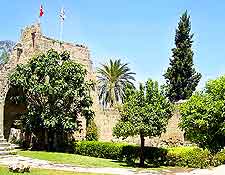
Kyrenia history is fairly impressive, as it was built up by various empires, although mired in conflict. The port town was noted for its strategic position on the north coast, allowing for trade with Asia Minor.
The Greeks, the Romans, the Venetians, the Turks and the British were all here at one stage, and today the town remains part of Turkish Cyprus.
Greeks, Romans and Arab Raiders
The Greeks settled the area on the north coast of
Cyprus that would later become Kyrenia. They used local stone to erect the town and defences and, after the arrival of the Romans in Cyprus, Kyrenia became established. Arab raiders plundered the coast in the 7th century, with the town's fragile defences providing little in the way of resistance.
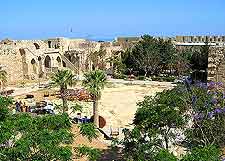
As a result, Kyrenia's basic castle - built by the Romans, was beefed up, followed by others on the same spot next to the harbour.
The castle that stands over the harbour today is mainly a Byzantine-Venetian incarnation, with the round towers being a Venetian flourish. A museum is located within Kyrenia Castle, featuring a 4th-century Greek ship as its main exhibit.
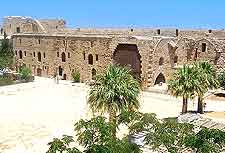
Venetian History
The town had excellent defences by the 13th century, including a huge chain across the entrance to the harbour. Along with the castle, the Venetians also beautified the town with many attractive buildings, while nearby Bellapais Abbey was built by French monks and became a popular detour for visitors to Kyrenia, for its beautiful courtyard and pavilions.
Despite the efforts of the Venetians to fortify and build up Cyprus, their 'modus operandi' was to exploit the island's resources and to tax the people, using the town as one of their gateways. In short, they influenced Kyrenia history, with financial gain being their priority.
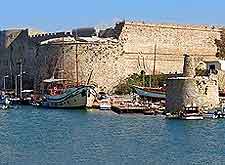
Ottomans and British
The staunch defences of Venetian-built Kyrenia were unfortunately no match for the might of the well-manned Ottoman army, who rolled into town in the year of 1571. Thousands of Turks were deposited in Cyprus. Things declined under the Turks at first, with much plundering and the expulsion of Christians, although maritime trade and the building of churches ensued in the 1700s.
The British took Cyprus in 1878, getting the island in order and modernising Kyrenia and other important coastal towns. A road was built to
Nicosia (the current capital) at this time. The town's harbour was expanded and schools were constructed. This period was not without its hardships, however, with high taxation in place and economic depression in general.
[
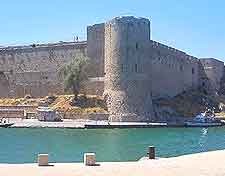
Early Tourism
Despite these hard times, revenue from tourism came early, with the building of hotels and the influx of Nicosians for their holidays, who were drawn to the coast and mild climate. Foreign travellers also made their way here post-WWII.
After independence in 1960, Greek and Turkish Cypriots clashed, having a knock-on effect for Kyrenia. Fortunately, this feud was relatively short-lived and the town continued to prosper, with the building of the Town Hall and more hotels in the 1970s. During the Turkish invasion of Cyprus in 1974, the Turks cleansed the town of Greek and Armenian Cypriots.
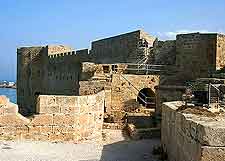
Modern Times in the Town
Kyrenia is now an extremely popular holiday spot and remains a thriving port town. The harbour and castle are the main highlights, while many museums impart the history of Kyrenia.
Nearby are several castles, including the Buffavento Castle, where Byzantine king Isaac Komnenos was famously holed up while Richard the Lion Heart was rampaging.
 Kyrenia history is fairly impressive, as it was built up by various empires, although mired in conflict. The port town was noted for its strategic position on the north coast, allowing for trade with Asia Minor.
Kyrenia history is fairly impressive, as it was built up by various empires, although mired in conflict. The port town was noted for its strategic position on the north coast, allowing for trade with Asia Minor. As a result, Kyrenia's basic castle - built by the Romans, was beefed up, followed by others on the same spot next to the harbour.
As a result, Kyrenia's basic castle - built by the Romans, was beefed up, followed by others on the same spot next to the harbour.


